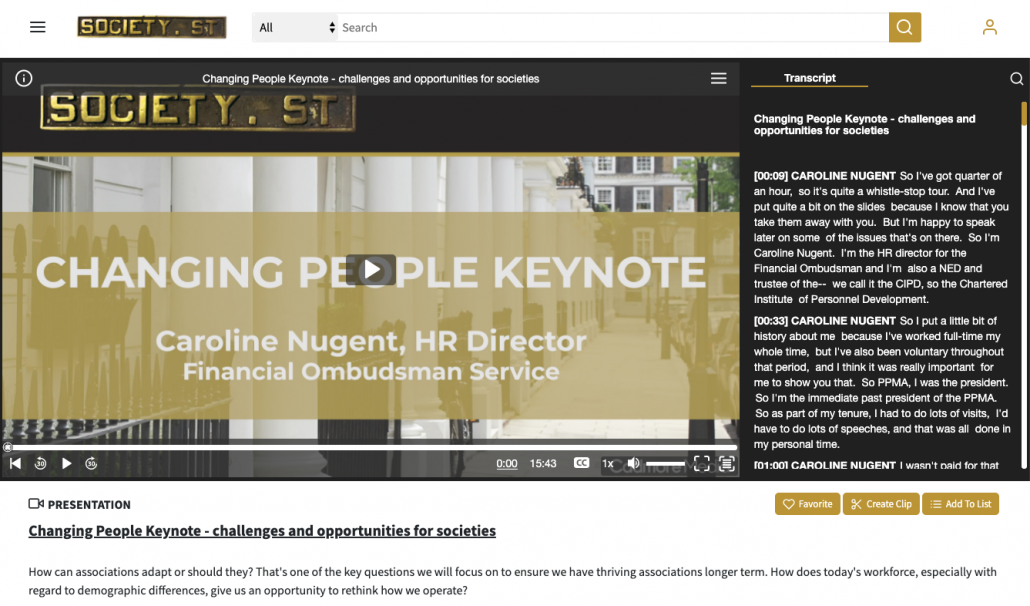Plan B: How to turn your society’s conference into a valuable online experience
Is your society planning a virtual conference to replace a cancelled in-person meeting?
Whether you have already made the decision to cancel an event or are engaged in contingency planning, you have probably started looking into running a virtual conference instead of a physical one. With increasing concerns over climate change, budget disparities and inclusion issues, online conferences were always going to take off. But, in this current crisis, societies have been pushed over a cliff and are learning to fly – fast. And they are facing a key challenge: how can I replicate the experience of my 3-day, 5,000-attendee, 1,000-paper conference in a virtual environment?
The short answer is: don’t. At least, don’t try and replicate the exact structure of the original event. Your goal should be to provide value to speakers, attendees, sponsors and exhibitors, even if that value is not what they had originally signed up for. While the value of in-person encounters and social networking cannot be replicated, the Internet also presents crucial benefits that should be taken advantage of. One of them is that online content can be asynchronous, giving attendees more flexibility to consume it when they wish to. And if you are not sure whether on-demand conference content will be popular, think Netflix and podcasts. And, think of all the parents who are currently trying to fit both homeschooling and a full-time job in their lives.
Indeed, one common misconception about virtual conferences is that they have to be exclusively “live” events. In reality, virtual meetings have two key components to them. They should have a live part, on the day(s), featuring key sessions alongside interactive discussions, Q&A and even networking and exhibiting opportunities. But they also have a crucial on-demand part, where recordings from the live part sit alongside submitted recorded presentations and additional materials collected from the conference speakers. A hybrid format allows speakers to share and get credit for their research, attendees to watch any session they like at any time, sponsors to get exposure over a longer period of time. And, over time, the society will build a deep pool of online resources that can be repurposed and monetized.
Cadmore Media can support you in both parts.
To manage live virtual events, our white-labeled meeting libraries feature event schedules with a registration function that interfaces with mainstream webinar technology, like Zoom Webinar or GoToWebinar, to give your virtual attendees the credentials they need for the event. These technologies provide the infrastructure you need for the event and allow for multiple presenters, questions and opinions from the virtual audience, acknowledgement for the sponsors, and the in-built recording function you will need for later. If you have not run this kind of large-scale webinar before, we have people on-hand who can help you support the event, or help facilitate the process.

For the mainstay of the virtual conference, the asynchronous part, Cadmore offers the best on-demand solution for scientific events. Your out-of-the-box media library will be populated with recordings of the live virtual event and those of the speakers which can be submitted prior to or after the virtual event, alongside supplementary materials such as slides, posters, abstracts. Having a library that builds over time can help you keep the conference current in people’s minds over an extended period, giving sponsors added value over time. If you couple that with the availability of analytics about which talks attracted the most interest, the sponsorship offering becomes quite compelling. We process the recordings and enrich them with interactive transcripts, making the on-demand content easy to consume, bookmark, clip and share. The recording transcripts can even be translated, allowing a global audience to engage in their own language, extending the reach of the event to a wider audience than could have ever attended the physical event. And of course, the same care need to be given to the accessibility of an online event as it would be to that of a physical event, which captioned and transcribed on-demand videos will help achieve.
The meeting libraries are purpose-built to host events content, with all the functionality you would expect of a publishing platform for learned society content, such as the ability to cite, attach DOIs, browse by topics, run full-text or faceted searches. These libraries are designed to remain in situ year on year as they accumulate an archive of content which can be sold on-demand, on subscription, or made available to members.
Additionally – or alternatively – Cadmore’s interactive player can be embedded easily on any web site you control, so you could include the conference content on your own web site, a community web site, a learning management system, or alongside the official written conference proceedings. And both solutions – media library and embeds – are powered by Cadmore’s digital asset management platform, which features advanced workflows to enrich event media assets as well as APIs to integrate with abstract management systems, CRMs and other databases.

